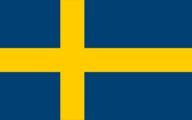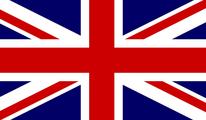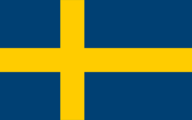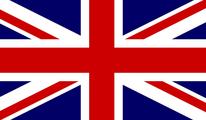
ASSQ (Autism Spectrum Screening Questionnaire) and ASSQ-REV
The ASSQ (Autism Spectrum Screening Questionnaire) is a screening questionnaire for autism.
About the ASSQ
The Autism Spectrum Screening Questionnaire (ASSQ) is a screening questionnaire for autism designed by Ehlers and Gillberg and further developed in collaboration with Lorna Wing in order to study prevalence of Asperger’s syndrome. It has since then become one of the most widely used autism screening tools in the world.
How to score the ASSQ
The ASSQ consists of 27 items/statements. The questionnaire is scored using a likert scale, with the following alternatives for each item: “not true” (0 points), “somewhat true” (1 point) and “certainly true” (2 points). All points are tallied up to produce a total score (maximum of 54 points).
Psychometric properties
Studies have reported the test-retest reliability of teacher scoring at 0.90-0.94 (Ehlers and Gillberg 1993; Ehlers et al 1999) and parent scoring at 0.96; inter-rater reliability between parents and teachers was 0.79 (Ehlers and Gillberg, 1993). As for the questionnaire’s validity, a Norwegian study reported sensitivity of 0.91 and specificity of 0.86 when a cut-off score of 17 was used (Posserud et al 2009).
How to use the ASSQ
Recommended cut-off scores vary somewhat depending on the country, whether parents or teachers are used as informants and whether the main priority is high sensitivity, specificity or both. In Sweden, 15 points is considered the cut-off score for non-clinical populations and 19 for clinical populations.
An extended version (ASSQ-REV) has also been developed in order to identify girls with autism.
The most prominent publications on this subject are Ehlers and Gillberg 1993, Ehlers et al 1999, Posserud et al 2006, Hepburn et al 2008, Posserud et al 2009, Kopp and Gillberg 2010, Guo et al 2011 and Mattilla et al 2012.
References
Core references (in order of importance)
- Gillberg, I. C., & Gillberg, C. (1989). Asperger syndrome: Some epidemiological considerations: A research note. Child Psychology & Psychiatry & Allied Disciplines, 30(4), 631–638.
- Gillberg, C. (1991) . “Clinical and neurobiological aspects of Asperger syndrome in six family studies ” . In Autism and Asperger syndrome , Edited by: Frith , U. 122-146 . Cambridge: Cambridge University Press
- Ehlers, S., & Gillberg, C. (1993). The epidemiology of Asperger syndrome. A total population study. Journal of child psychology and psychiatry, and allied disciplines, 34(8), 1327–1350.
- Ehlers, S., Gillberg, C., & Wing, L. (1999). A screening questionnaire for Asperger syndrome and other high-functioning autism spectrum disorders in school age children. Journal of autism and developmental disorders, 29(2), 129–141
Other references
2023
- Yaşar M, Çetin FH, Türkoğlu S, Uçar HN. The relationship between executive functions and chronotype in healthy siblings of children with autism spectrum disorder. Chronobiology International. 2023;40(3):253-61.
- Junttila M, Kielinen M, Jussila K, Joskitt L, Mäntymaa M, Ebeling H, et al. The traits of Autism Spectrum Disorder and bullying victimization in an epidemiological population. European Child & Adolescent Psychiatry. 2023. Online ahead of print
- Junttila M, Jussila K, Joskitt L, Ebeling H, Kielinen M, Loukusa S, et al. Factor analysis of the autism spectrum screening questionnaire in a population-based child sample. Nordic Journal of Psychiatry. 2023;77(7):696-705.
- Højgaard D, Arildskov TW, Skarphedinsson G, Hybel KA, Ivarsson T, Weidle B, et al. Do Autistic Traits Predict Outcome of Cognitive Behavioral Therapy in Pediatric Obsessive-Compulsive Disorder? Research on Child and Adolescent Psychopathology. 2023;51(8):1083-95.
- Elgen SKF, Røiseland MA, Bircow EI, Vollsæter M, Hysing M. Symptoms and antecedents of autism in children born extremely premature: a national population-based study. European Child and Adolescent Psychiatry. 2023;32(9):1579-88.
2022
- Ozbaran NB, Ozyasar SC, Dogan N, Kafali HY, Isik E, Satar A, et al. Evaluation of social cognition, autistic traits, and dysmorphology in comorbid specific learning disorder and attention-deficit/hyperactivity disorder. Clinical Child Psychology and Psychiatry. 2022;27(4):991-1005.
- Bal VH, Leventhal BL, Carter G, Kim H, Koh YJ, Ha M, et al. Parent-Reported Suicidal Ideation in Three Population-Based Samples of School-Aged Korean Children With Autism Spectrum Disorder and Autism Spectrum Screening Questionnaire Screen Positivity. Archives of Suicide Research. 2022;26(3):1232-49.
2021
- Tanaka M, Saito M, Takahashi M, Adachi M, Nakamura K. Interformat Reliability of Web-Based Parent-Rated Questionnaires for Assessing Neurodevelopmental Disorders Among Preschoolers: Cross-sectional Community Study. JMIR Pediatrics and Parenting. 2021;4(1):e20172.
- Sun Y, Li X, Xu L, Ma Z, Yang Y, Yin T, et al. Health-related risky behaviors in Chinese adolescents with autism: a cross-sectional study. Child and Adolescent Psychiatry and Mental Health. 2021;15(1):39.
2020
- Zhang SH, Wang P, Yang BR, Zhong YY, Wang YF. [Characteristics of executive function in children with attention deficit/hyperactivity disorder comorbid with high functioning autism]. Zhonghua Yi Xue Za Zhi. 2020;100(31):2446-51.
- Tsujiguchi H, Miyagi S, Nguyen TTT, Hara A, Ono Y, Kambayashi Y, et al. Relationship between Autistic Traits and Nutrient Intake among Japanese Children and Adolescents. Nutrients. 2020;12(8).
- Jussila K, Junttila M, Kielinen M, Ebeling H, Joskitt L, Moilanen I, et al. Sensory Abnormality and Quantitative Autism Traits in Children With and Without Autism Spectrum Disorder in an Epidemiological Population. Journal of Autism and Developmental Disorders. 2020;50(1):180-8.
2019
- Kuusikko-Gauffin S, Elsheikh S, Bölte S, Omar M, Riad G, Ebeling H, et al. Emotion recognition from the eye region in children with and without Autism Spectrum Disorder in Arab and Scandinavian countries. Scandinavian Journal of Child and Adolescent Psychiatry and Psychology. 2019;6(4):159-69.
2018
- Sandtorv LB, Fevang SKE, Nilsen SA, Bøe T, Gjestad R, Haugland S, et al. Symptoms Associated With Attention Deficit/Hyperactivity Disorder and Autism Spectrum Disorders in School-Aged Children Prenatally Exposed to Substances. Substance Abuse. 2018;12:1178221818765773.
- Posserud M, Hysing M, Helland W, Gillberg C, Lundervold AJ. Autism traits: The importance of “co-morbid” problems for impairment and contact with services. Data from the Bergen Child Study. Research in Developmental Disabilities. 2018;72:275-83.
- Kim KM, Lim MH, Kwon HJ, Yoo SJ, Kim EJ, Kim JW, et al. Associations between urinary cotinine and symptoms of attention deficit/hyperactivity disorder and autism spectrum disorder. Environmental Research. 2018;166:481-6.
- Adachi M, Takahashi M, Takayanagi N, Yoshida S, Yasuda S, Tanaka M, et al. Correction: Adaptation of the Autism Spectrum Screening Questionnaire (ASSQ) to preschool children. PLoS One. 2018;13(8):e0203254.
- Adachi M, Takahashi M, Takayanagi N, Yoshida S, Yasuda S, Tanaka M, et al. Adaptation of the Autism Spectrum Screening Questionnaire (ASSQ) to preschool children. PLoS One. 2018;13(7):e0199590.
2017
- Köse S, Özbaran B, Yazgan Y, Bildik T, Erermiş S, Aydın C, et al. The Psychometric Properties of Turkish Version of Autism Spectrum Screening Questionnaire in Children aged 6-18 years. Turk Psikiyatri Dergisi. 2017;28(4):268-77.
2016
- Kim KN, Kwon HJ, Hong YC. Low-level lead exposure and autistic behaviors in school-age children. Neurotoxicology. 2016;53:193-200.
- Cheon KA, Park JI, Koh YJ, Song J, Hong HJ, Kim YK, et al. The social responsiveness scale in relation to DSM IV and DSM5 ASD in Korean children. Autism Research. 2016;9(9):970-80.
2015
- Reilly C, Atkinson P, Das KB, Chin RF, Aylett SE, Burch V, et al. Features of autism spectrum disorder (ASD) in childhood epilepsy: a population-based study. Epilepsy & Behavior. 2015;42:86-92.
- Brix MK, Ersland L, Hugdahl K, Grüner R, Posserud MB, Hammar Å, et al. “Brain MR spectroscopy in autism spectrum disorder-the GABA excitatory/inhibitory imbalance theory revisited”. Frontiers in Human Neuroscience. 2015;9:365.
2014
- Walder DJ, Laplante DP, Sousa-Pires A, Veru F, Brunet A, King S. Prenatal maternal stress predicts autism traits in 6½ year-old children: Project Ice Storm. Psychiatry Research. 2014;219(2):353-60.
- Ito H, Matsumoto K, Takayanagi N, Harada S, Ohtake S, Mochizuki N, et al. [Psychometric properties of the Japanese version of the Autism Spectrum Screening Questionnaire (ASSQ): development of a short form]. Shinrigaku Kenkyu. 2014;85(3):304-12.
2013
- Kobayashi K, Endoh F, Ogino T, Oka M, Morooka T, Yoshinaga H, et al. Questionnaire-based assessment of behavioral problems in Japanese children with epilepsy. Epilepsy & Behavior. 2013;27(1):238-42.
- Jakab A, Emri M, Spisak T, Szeman-Nagy A, Beres M, Kis SA, et al. Autistic traits in neurotypical adults: correlates of graph theoretical functional network topology and white matter anisotropy patterns. PLoS One. 2013;8(4):e60982.
- Georgsdottir I, Haraldsson A, Dagbjartsson A. Behavior and well-being of extremely low birth weight teenagers in Iceland. Early Human Development. 2013;89(12):999-1003.
2012
- Sivertsen B, Posserud MB, Gillberg C, Lundervold AJ, Hysing M. Sleep problems in children with autism spectrum problems: a longitudinal population-based study. Autism. 2012;16(2):139-50.
- Ryland HK, Hysing M, Posserud MB, Gillberg C, Lundervold AJ. Autism spectrum symptoms in children with neurological disorders. Child and Adolescent Psychiatry and Mental Health. 2012;6(1):34.
- Mattila ML, Jussila K, Linna SL, Kielinen M, Bloigu R, Kuusikko-Gauffin S, et al. Validation of the Finnish Autism Spectrum Screening Questionnaire (ASSQ) for clinical settings and total population screening. Journal of Autism and Developmental Disorders. 2012;42(10):2162-80.
- Lorange M, Kristmundsdóttir K, Skarphédinsson G, Hermannsdóttir BS, Oddsdóttir LB, Sigurdardóttir DB. [Relationship between pre-adoptive risk factors and psychopathological difficulties of internationally adopted children in Iceland]. Laeknabladid. 2012;98(1):19-23.
2011
- Kopp S, Gillberg C. The Autism Spectrum Screening Questionnaire (ASSQ)-Revised Extended Version (ASSQ-REV): an instrument for better capturing the autism phenotype in girls? A preliminary study involving 191 clinical cases and community controls. Research in Developmental Disabilities. 2011;32(6):2875-88.
- Guo YQ, Tang Y, Rice C, Lee LC, Wang YF, Cubells JF. Validation of the Autism Spectrum Screening Questionnaire, Mandarin Chinese Version (CH-ASSQ) in Beijing, China. Autism. 2011;15(6):713-27.
2010
- Posserud M, Lundervold AJ, Lie SA, Gillberg C. The prevalence of autism spectrum disorders: impact of diagnostic instrument and non-response bias. Social Psychiatry and Psychiatric Epidemiology. 2010;45(3):319-27.
- Norris M, Lecavalier L. Screening accuracy of Level 2 autism spectrum disorder rating scales. A review of selected instruments. Autism. 2010;14(4):263-84.
- Rahko J, Paakki JJ, Starck T, Nikkinen J, Remes J, Hurtig T, et al. Functional mapping of dynamic happy and fearful facial expression processing in adolescents. Brain Imaging and Behavior. 2010;4(2):164-76.
- Fujibayashi H, Kitayama S, Matsuo M. Score of inattention subscale of ADHD rating scale-IV is significantly higher for AD/HD than PDD. The Kobe Journal of Medical Sciences. 2010;56(1):E12-7.
2009
- Posserud MB, Lundervold AJ, Gillberg C. Validation of the autism spectrum screening questionnaire in a total population sample. Journal of Autism and Developmental Disorders 2009;39(1):126-34.
- Henderson HA, Zahka NE, Kojkowski NM, Inge AP, Schwartz CB, Hileman CM, et al. Self-referenced memory, social cognition, and symptom presentation in autism. Journal of Child Psychology and Psychiatry. 2009;50(7):853-61.
- Mattila ML, Jussila K, Kuusikko S, Kielinen M, Linna SL, Ebeling H, et al. When does the Autism Spectrum Screening Questionnaire (ASSQ) predict autism spectrum disorders in primary school-aged children? European Child & Adolescent Psychiatry. 2009;18(8):499-509.
2008
- Posserud B, Lundervold AJ, Steijnen MC, Verhoeven S, Stormark KM, Gillberg C. Factor analysis of the Autism Spectrum Screening Questionnaire. Autism. 2008;12(1):99-112.
- Hepburn SL, DiGuiseppi C, Rosenberg S, Kaparich K, Robinson C, Miller L. Use of a teacher nomination strategy to screen for autism spectrum disorders in general education classrooms: a pilot study. Journal of Autism and Developmental Disorders. 2008;38(2):373-82.
2007
- Indredavik MS, Brubakk AM, Romundstad P, Vik T. Prenatal smoking exposure and psychiatric symptoms in adolescence. Acta Paediatrica. 2007;96(3):377-82.
2006
- Posserud MB, Lundervold AJ, Gillberg C. Autistic features in a total population of 7-9-year-old children assessed by the ASSQ (Autism Spectrum Screening Questionnaire). Journal of Child Psychology and Psychiatry. 2006;47(2):167-75.
- Hattori J, Ogino T, Abiru K, Nakano K, Oka M, Ohtsuka Y. Are pervasive developmental disorders and attention-deficit/hyperactivity disorder distinct disorders? Brain & Development. 2006;28(6):371-4.
- Petersen DJ, Bilenberg N, Hoerder K, Gillberg C. The population prevalence of child psychiatric disorders in Danish 8- to 9-year-old children. European Child & Adolescent Psychiatry. 2006;15(2):71-8.
- Allik H, Larsson JO, Smedje H. Health-related quality of life in parents of school-age children with Asperger Syndrome or High-Functioning Autism. Health and Quality of Life Outcomes. 2006;4:1.
2005
- Campbell JM. Diagnostic assessment of Asperger’s disorder: a review of five third-party rating scales. Journal of Autism and Developmental Disorders 2005;35(1):25-35.
2003
- Webb E, Morey J, Thompsen W, Butler C, Barber M, Fraser WI. Prevalence of autistic spectrum disorder in children attending mainstream schools in a Welsh education authority. Developmental Medicine and Child Neurology. 2003;45(6):377-84.
ASSQ-REV
The ASSQ-REV was developed with a view to capturing concerns/symptoms of autism that might be more typically occurring in girls than boys. Very few studies have been performed showing that there might indeed be a few of the extra 18 items included in the ASSQ-REV as compared with the ASSQ that particularly capture the female autism phenotype.
References
Kopp S, Gillberg C. The Autism Spectrum Screening Questionnaire (ASSQ)-Revised Extended Version (ASSQ-REV): an instrument for better capturing the autism phenotype in girls? A preliminary study involving 191 clinical cases and community controls. Research in Developmental Disabilities. 2011; 32(6):2875-2888.



